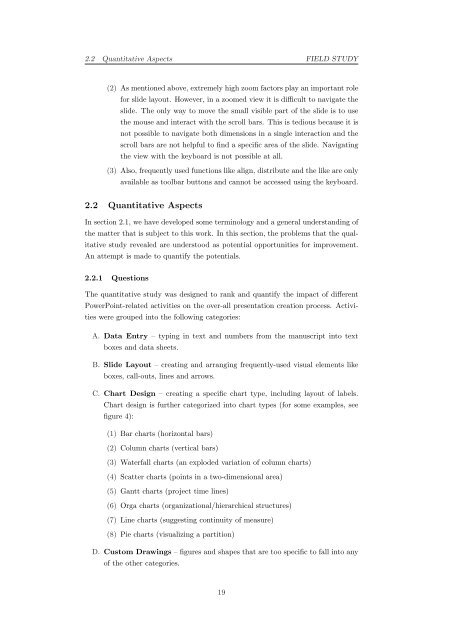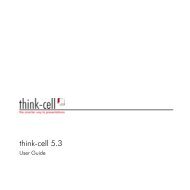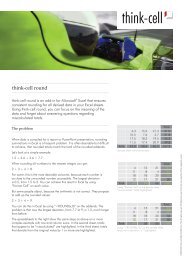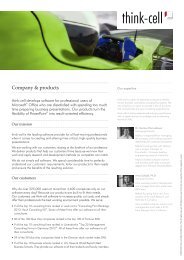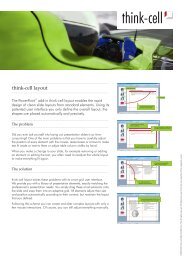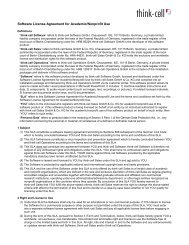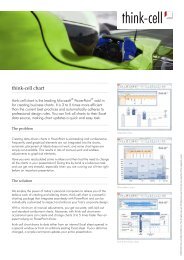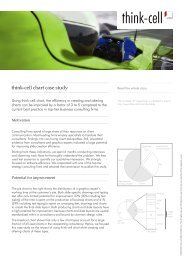think-cell technical report TC2003/01 A GUI-based Interaction ...
think-cell technical report TC2003/01 A GUI-based Interaction ...
think-cell technical report TC2003/01 A GUI-based Interaction ...
You also want an ePaper? Increase the reach of your titles
YUMPU automatically turns print PDFs into web optimized ePapers that Google loves.
2.2 Quantitative Aspects FIELD STUDY<br />
(2) As mentioned above, extremely high zoom factors play an important role<br />
for slide layout. However, in a zoomed view it is difficult to navigate the<br />
slide. The only way to move the small visible part of the slide is to use<br />
the mouse and interact with the scroll bars. This is tedious because it is<br />
not possible to navigate both dimensions in a single interaction and the<br />
scroll bars are not helpful to find a specific area of the slide. Navigating<br />
the view with the keyboard is not possible at all.<br />
(3) Also, frequently used functions like align, distribute and the like are only<br />
available as toolbar buttons and cannot be accessed using the keyboard.<br />
2.2 Quantitative Aspects<br />
In section 2.1, we have developed some terminology and a general understanding of<br />
the matter that is subject to this work. In this section, the problems that the qual-<br />
itative study revealed are understood as potential opportunities for improvement.<br />
An attempt is made to quantify the potentials.<br />
2.2.1 Questions<br />
The quantitative study was designed to rank and quantify the impact of different<br />
PowerPoint-related activities on the over-all presentation creation process. Activi-<br />
ties were grouped into the following categories:<br />
A. Data Entry – typing in text and numbers from the manuscript into text<br />
boxes and data sheets.<br />
B. Slide Layout – creating and arranging frequently-used visual elements like<br />
boxes, call-outs, lines and arrows.<br />
C. Chart Design – creating a specific chart type, including layout of labels.<br />
Chart design is further categorized into chart types (for some examples, see<br />
figure 4):<br />
(1) Bar charts (horizontal bars)<br />
(2) Column charts (vertical bars)<br />
(3) Waterfall charts (an exploded variation of column charts)<br />
(4) Scatter charts (points in a two-dimensional area)<br />
(5) Gantt charts (project time lines)<br />
(6) Orga charts (organizational/hierarchical structures)<br />
(7) Line charts (suggesting continuity of measure)<br />
(8) Pie charts (visualizing a partition)<br />
D. Custom Drawings – figures and shapes that are too specific to fall into any<br />
of the other categories.<br />
19


